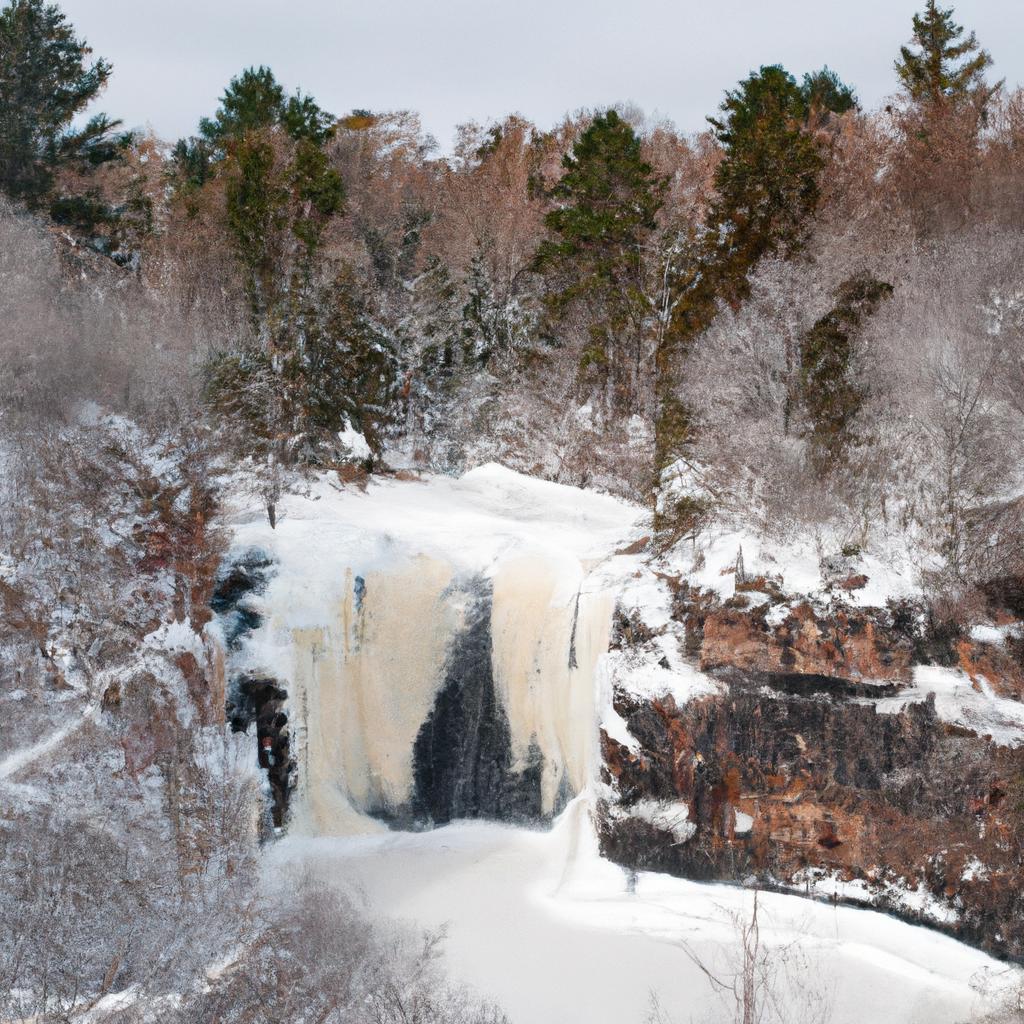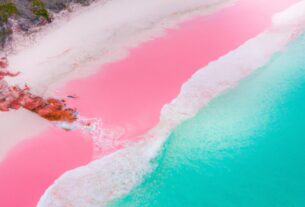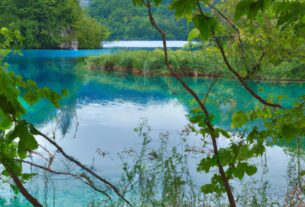Are you in search of a one-of-a-kind winter expedition? Look no further than the frozen waterfalls of Minnesota. This winter wonderland in Minnesota is a truly enchanting experience that can’t be replicated anywhere else. The frozen waterfalls act as a natural magnet, attracting tourists from every corner of the globe. In this article, I’ll be your guide, taking you through the most breathtaking frozen waterfalls in Minnesota, unraveling the science behind these frozen wonders, providing you with photography tips, suggesting outdoor activities to relish, and much more!
Minnesota’s winter wonderland is a sight to behold. With snow-covered trees, frozen lakes, and icy waterfalls, it is a place of unspoiled beauty. What makes the frozen waterfalls so captivating? They come into existence when water freezes in mid-flow, creating a spectacular natural phenomenon. These frozen waterfalls are not only visually stunning but also provide a unique outdoor experience for all visitors.
So, let’s embark on this thrilling winter wonderland adventure. Are you ready? Let’s get started!
The Best Frozen Waterfalls in Minnesota
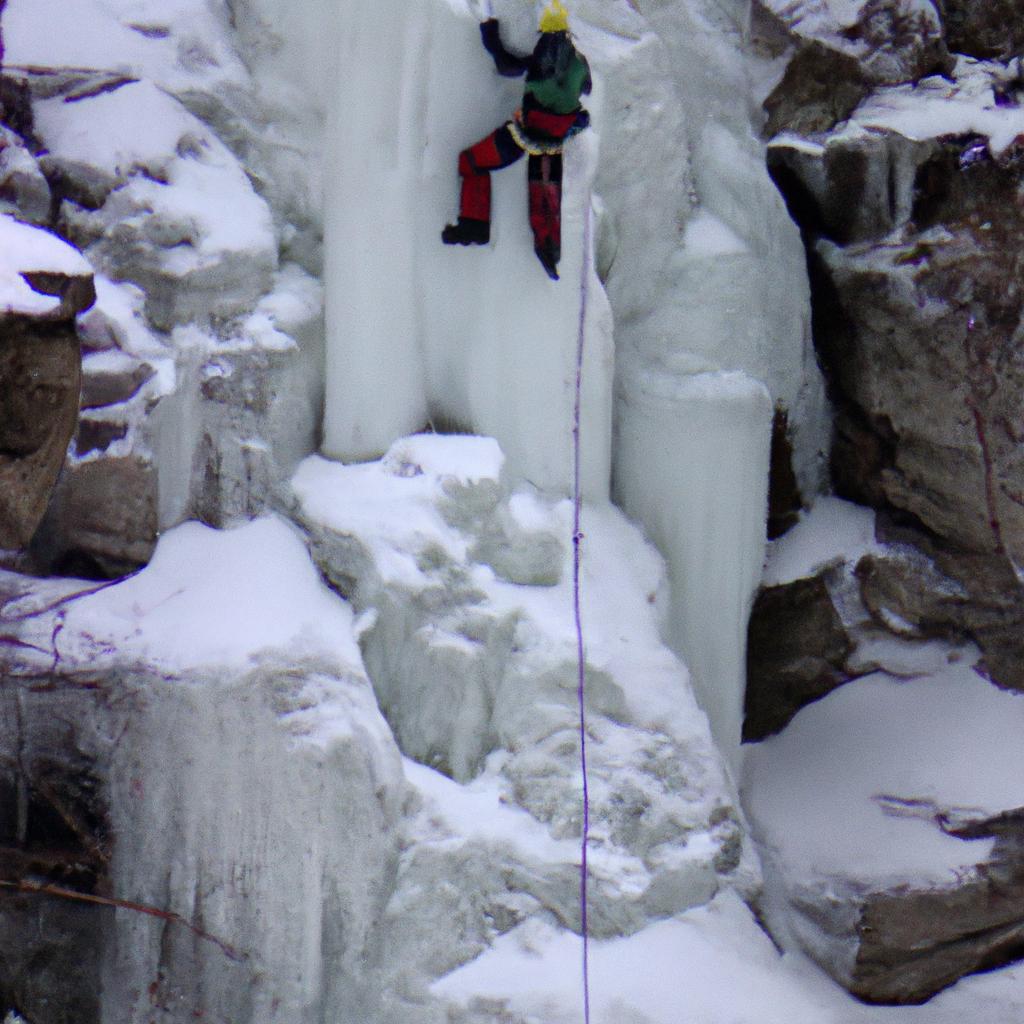
Looking to experience the best of Minnesota’s frozen waterfalls? Here are some of the must-see frozen waterfalls that you absolutely cannot afford to miss:
Minnehaha Falls
Located in Minneapolis, Minnehaha Falls is a popular destination for both locals and visitors. Standing at 53 feet tall, this frozen waterfall offers a unique perspective as you can walk behind it. The park also provides winter activities such as cross-country skiing and snowshoeing.
Gooseberry Falls
Gooseberry Falls, situated on Minnesota’s North Shore, is a destination that cannot be missed. With a height of 30 feet, the waterfall showcases intricate ice formations that are sure to leave you breathless. The park offers winter activities such as snowshoeing, cross-country skiing, and winter camping.
Tettegouche State Park
Situated on Minnesota’s North Shore, Tettegouche State Park is renowned for its stunning frozen waterfalls. The park features multiple waterfalls, including High Falls, which stands tall at 60 feet. Visitors can enjoy various winter activities, such as snowshoeing, cross-country skiing, and even ice climbing.
Minneopa Falls
Located in Mankato, Minneopa Falls is a hidden gem in southern Minnesota. With a height of 39 feet, this frozen waterfall showcases stunning ice formations during the winter season. The park offers winter activities such as snowshoeing and cross-country skiing.
Remember to prioritize safety when visiting frozen waterfalls. Stay on designated paths and trails, wear appropriate winter gear, and be cautious of any potential hazards. By keeping these safety tips in mind, you can enjoy the beauty of Minnesota’s frozen waterfalls without any worries.
The Science Behind Frozen Waterfalls
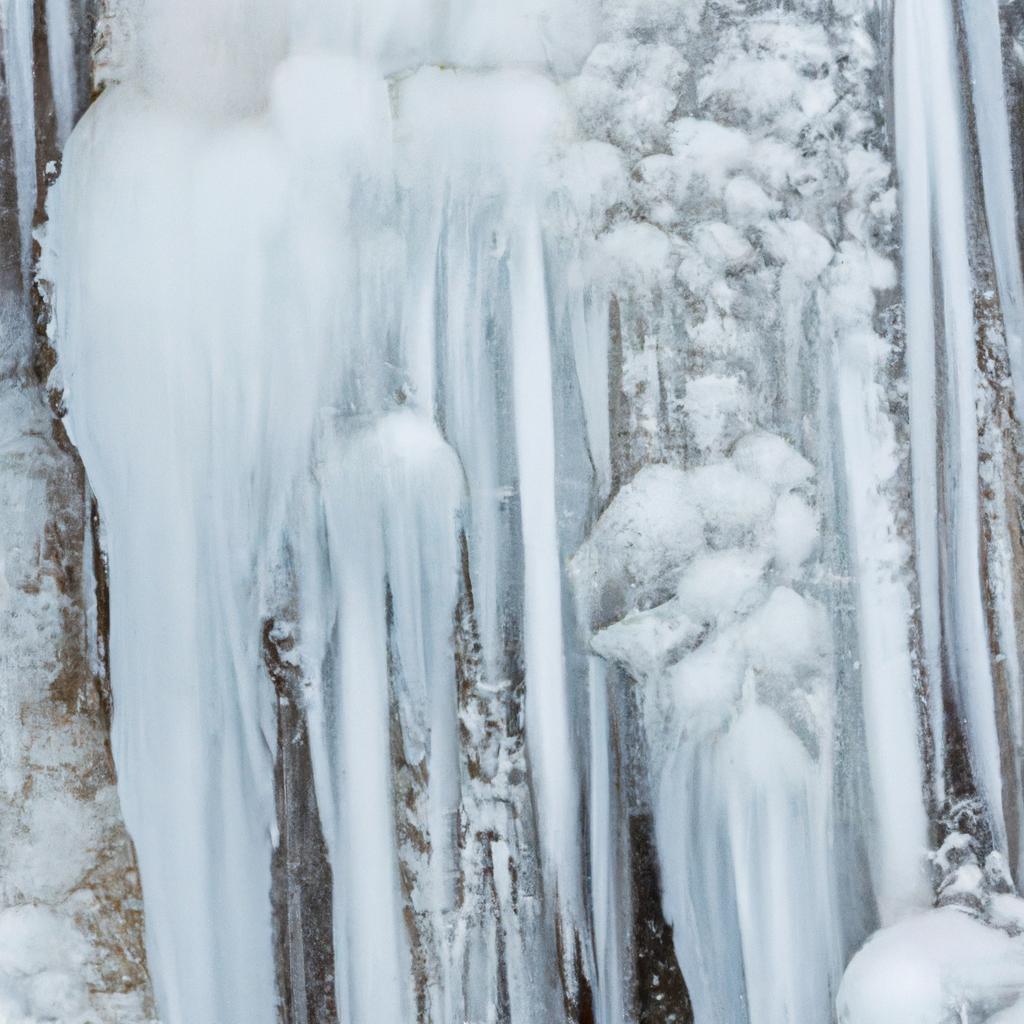
Have you ever wondered how waterfalls freeze? The process of a waterfall freezing is fascinating and influenced by various environmental factors. In this section, we will delve into the science behind frozen waterfalls and explore the unique formations that result from freezing.
Explanation of How Waterfalls Freeze
Waterfalls freeze when the temperature drops below freezing. As the temperature decreases, the flowing water over the waterfall starts to freeze. Initially, the water droplets closest to the surface freeze, creating a thin layer of ice. As more water flows over the surface, the ice layer thickens, gradually building up.
The Role of Temperature, Wind, and Water Flow
The freezing process of waterfalls is influenced by temperature, wind, and water flow. The lower the temperature, the faster the waterfall freezes. Wind can also affect the freezing process, speeding up the rate at which water freezes. Water flow is another essential factor. A slow-moving waterfall may freeze entirely, while a fast-moving one may only partially freeze.
The Unique Formations Resulting from Freezing
Frozen waterfalls give rise to formations that are not seen in their unfrozen counterparts. These formations can take various shapes and sizes, ranging from delicate icicles to massive ice pillars. These unique formations create a perfect opportunity for capturing stunning winter photography and leave spectators in awe.
Understanding the science behind frozen waterfalls adds to the appreciation of these natural wonders. Exploring the unique formations and learning about the environmental factors that influence the freezing process can make your winter wonderland adventure even more magical.
Winter Photography Tips for Capturing Frozen Waterfalls
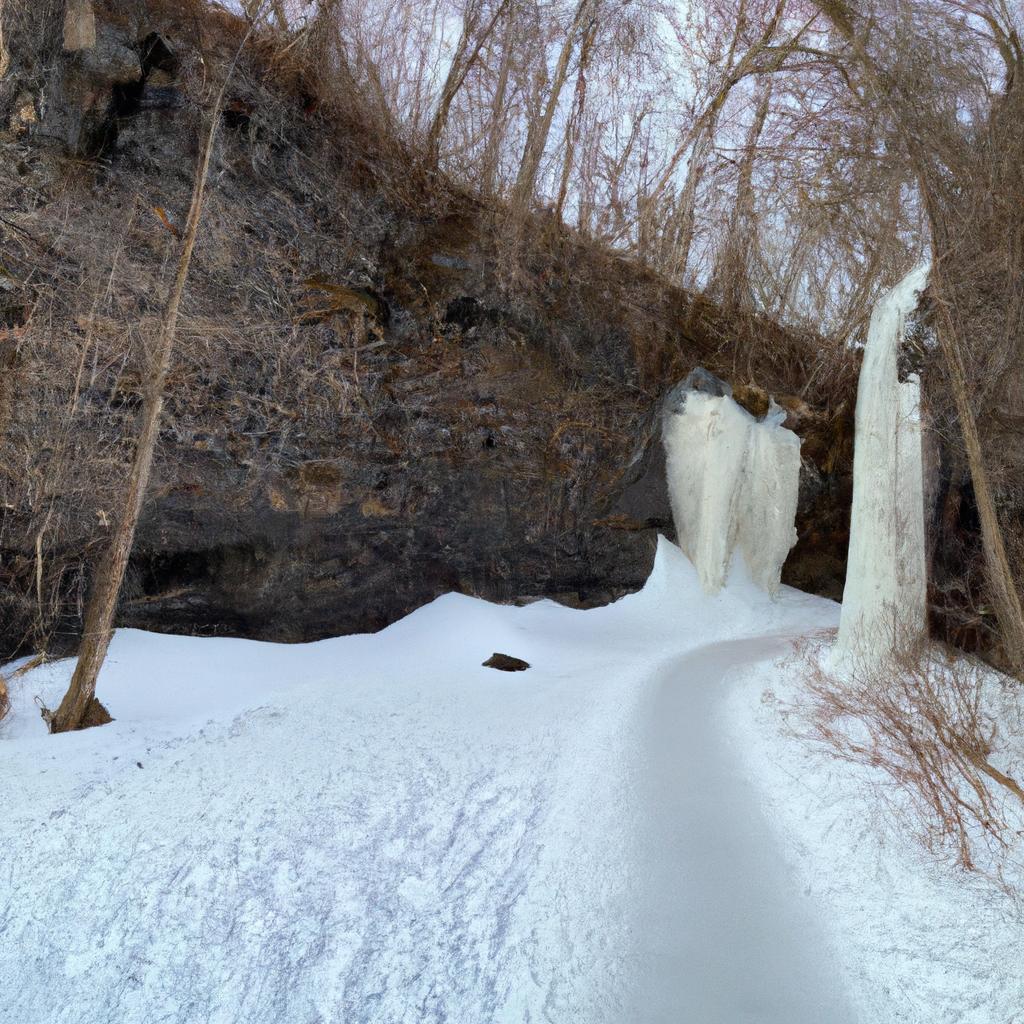
Winter photography can be a challenge, especially when it comes to capturing the beauty of frozen waterfalls. To take breathtaking shots of these natural wonders, you’ll need the right equipment, lighting, and composition. In this section, I will provide you with some winter photography tips to help you capture the best shots of frozen waterfalls.
Best equipment and gear for winter photography
When it comes to winter photography, having the right gear is crucial. Here are some essential equipment and gear for capturing the beauty of frozen waterfalls:
- A sturdy tripod: Keep your camera steady and avoid camera shake.
- A polarizing filter: Reduce glare and reflections, enhancing the colors in your photos.
- A waterproof camera bag: Protect your camera and gear from the challenging winter elements.
- Warm clothing: Dress in layers to stay warm in the cold weather.
Lighting and exposure tips
Lighting and exposure are vital elements of photography. While winter lighting can be challenging, there are techniques to capture stunning photos of frozen waterfalls. Here are some lighting and exposure tips to keep in mind:
- Shoot during the golden hour: Capture photos during the hour after sunrise or before sunset when the light is soft and warm.
- Use a low ISO: A low ISO reduces noise and produces sharper images.
- Bracket your shots: Take multiple shots at different exposures to capture the best possible shot.
Composition and framing techniques
Composition and framing play a significant role in creating visually appealing photos. Here are some composition and framing techniques to consider when photographing frozen waterfalls:
- Rule of thirds: Divide your frame into thirds and place your subject on one of the lines or intersections.
- Leading lines: Use leading lines to guide the viewer’s eye towards your subject.
- Perspective: Experiment with different perspectives, such as shooting from above or below, to create unique and interesting photos.
By following these winter photography tips, you can capture stunning photos of frozen waterfalls and create lasting memories of your winter wonderland adventure.
Outdoor Activities to Enjoy at Frozen Waterfalls
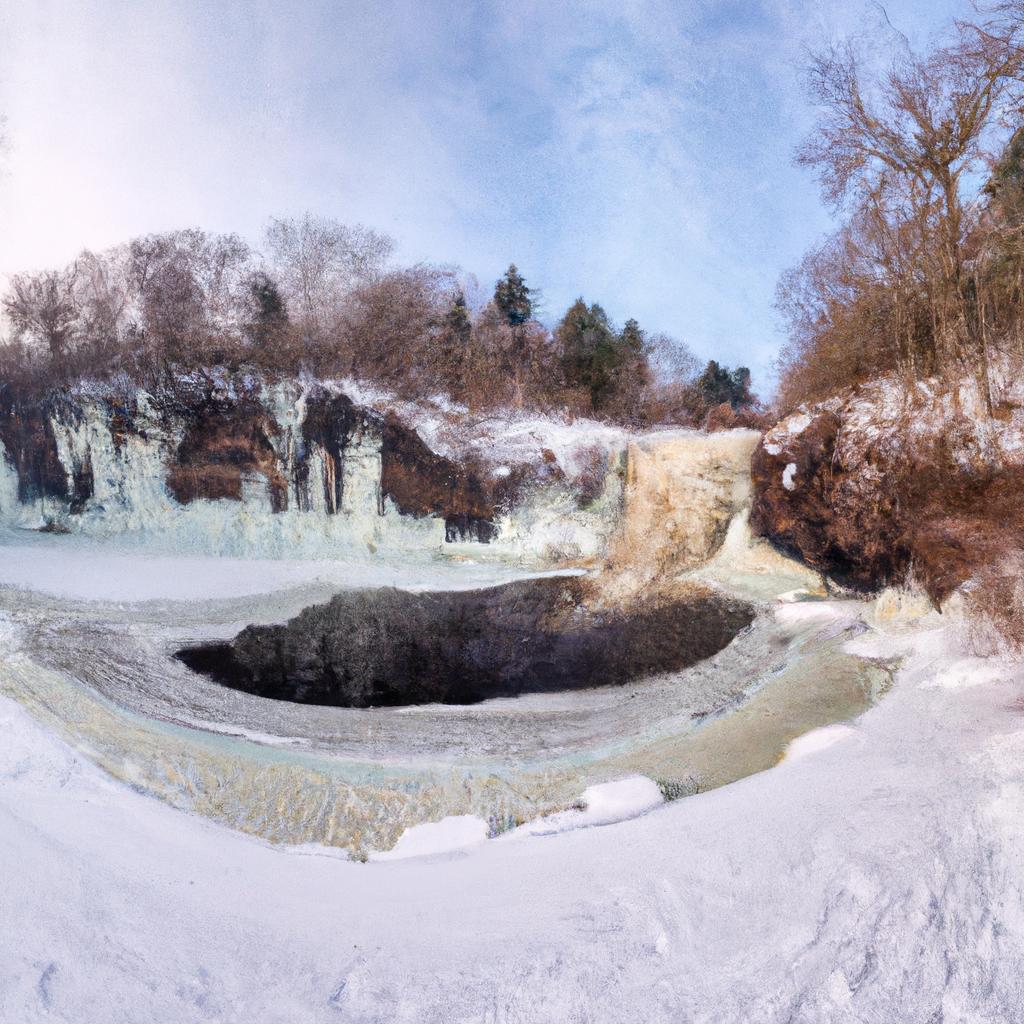
When you visit the frozen waterfalls of Minnesota, you’ll find a wide range of outdoor activities to enjoy. Whether you love hiking on snowshoes or ice climbing, there is something for everyone.
Winter Hiking and Trekking
One of the best ways to experience frozen waterfalls is through hiking or trekking. The winter landscape in Minnesota is awe-inspiring, and walking on snow-covered trails is a truly unique adventure. Remember to wear appropriate gear, including warm clothing, waterproof boots, and snowshoes if necessary.
Ice Climbing and Rappelling
For the more adventurous souls, ice climbing and rappelling are popular activities at frozen waterfalls. Minnesota is home to several ice climbing parks that offer guided tours and equipment rentals for beginners. Experienced climbers can challenge themselves by scaling the frozen waterfall walls while enjoying the breathtaking views.
Snowshoeing and Cross-Country Skiing
Snowshoeing and cross-country skiing are popular ways to explore frozen waterfalls and their surroundings. With miles of groomed trails, visitors can immerse themselves in a peaceful and scenic adventure. Both activities offer an opportunity to experience the tranquility of Minnesota’s winter landscape.
Remember to take precautions and prepare accordingly for any outdoor activity. Always check the weather forecast and trail conditions before heading out. With so many outdoor activities to enjoy at frozen waterfalls, make the most of your winter wonderland adventure in Minnesota.
Conclusion
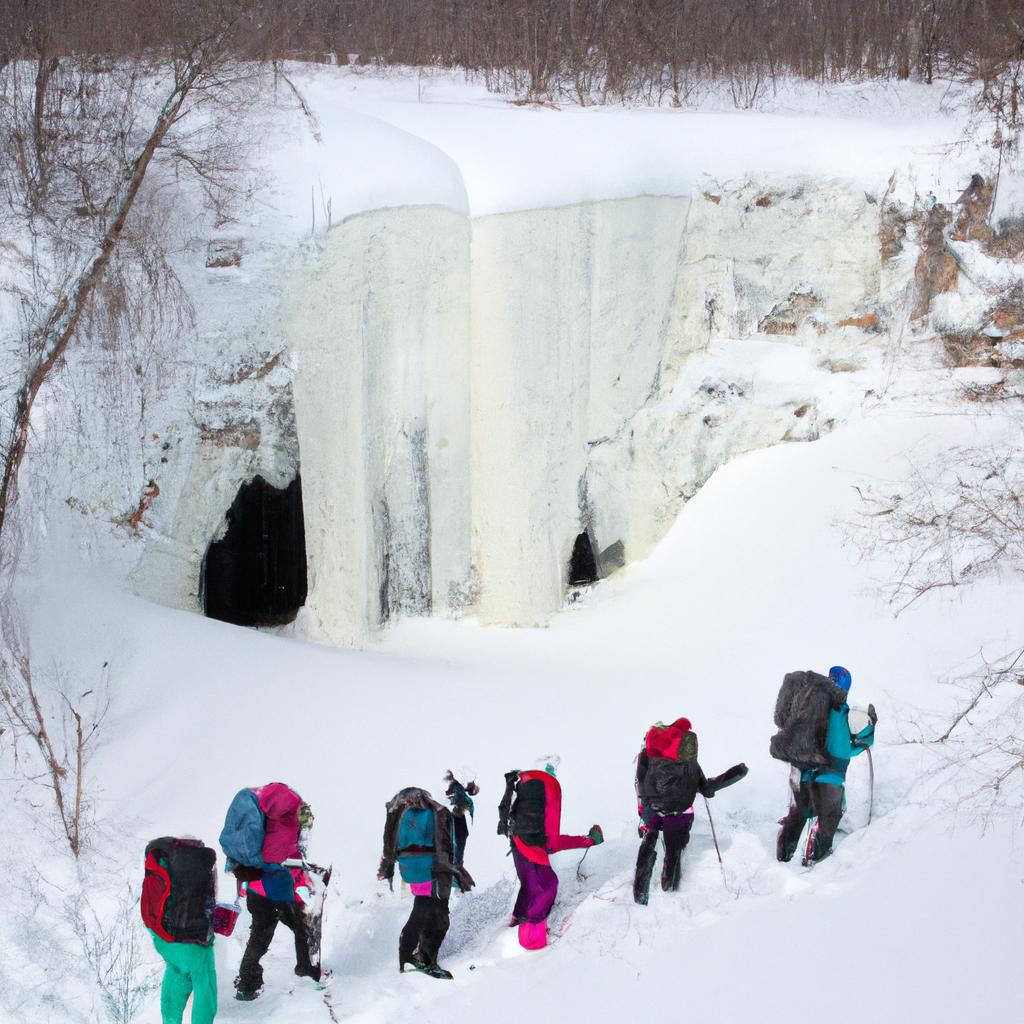
In conclusion, the frozen waterfalls of Minnesota provide a winter wonderland adventure that is truly unforgettable. From the top frozen waterfalls in the state to understanding the science behind them, capturing stunning photos, and enjoying outdoor activities, there is something for everyone to relish.
As a natural attraction, frozen waterfalls offer a unique experience that can’t be replicated. Whether you are an avid hiker or a casual photographer, these frozen waterfalls have something to offer. So, why wait? Plan your trip to Minnesota and explore the frozen waterfalls for yourself! And don’t forget to share your experiences and photos on social media, tagging TooLacks to showcase your winter adventure.
Remember, TooLacks is here to provide you with the latest updates and insights on all things travel and adventure. Happy exploring! TooLacks
